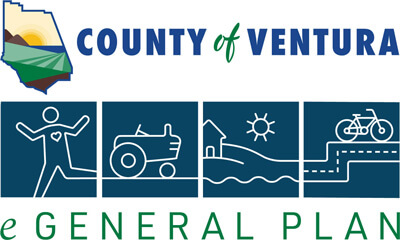California’s coastline, which includes more than 2,000 miles of open coast and enclosed bays, is vulnerable to a range of natural hazards, including storms, extreme high tides, tsunamis, and rising sea levels related to climate change. Sea level rise will increase the threat of coastal flooding. Along the central and southern California coast, the sea has risen by more than 5.9 inches over the 20th Century. Climate change modeling, as reported in the Ocean Protection Council’s Sea Level Rise Guidance document (Natural Resources Agency, State of California, 2018), provides sea level rise guidance that projects up to 85.2 inches of increase by 2100.
Popular coastal recreational resources, critical transportation infrastructure, facilities associated with Naval Base Ventura County, as well as residential and commercial properties along the coast are vulnerable to five or more feet of sea level rise within Ventura County, particularly in conjunction with one hundred year storm events along the coast (one percent annual chance). Open space uses such as beaches, sand dunes, agriculture, and estuaries are also highly vulnerable. By the year 2040, prominent sea level models predict that beach widths will noticeably decrease. By 2100, narrow beaches on the north and south coasts of the County will disappear, and the expansive central coast beaches will be reduced by half.
Additionally, areas close to the ocean with high groundwater could become flooded as rising tides infiltrate through soils and pond in low-lying areas. Along coastal highways, increasing forces of erosion may expose and damage buried infrastructure and roadway structures. Groundwater quality is likely to degrade due to increased saltwater intrusion.
Sea level rise will also have an impact on Ventura County’s coastal ecosystems. Aquatic ecosystems located in creeks, streams, and estuaries along the coast, many containing a range of sensitive species of plants and animals, will need to adapt to changes in water quality from saltwater intrusion/incursion further upstream. The beneficial services that coastal ecosystems provide, such as flood protection, water filtration, and support for fisheries will be threatened as rising sea levels expose beach, dune, estuarine, and freshwater habitats. Finally, natural resources, such as cobble, sand, and dunes that have been overlooked for coastal planning will be increasingly necessary to hold and maintain the County’s beaches for sea level rise adaptation.
For policies concerning coastal resources, see Chapter 6, Conservation and Open Space Element.
